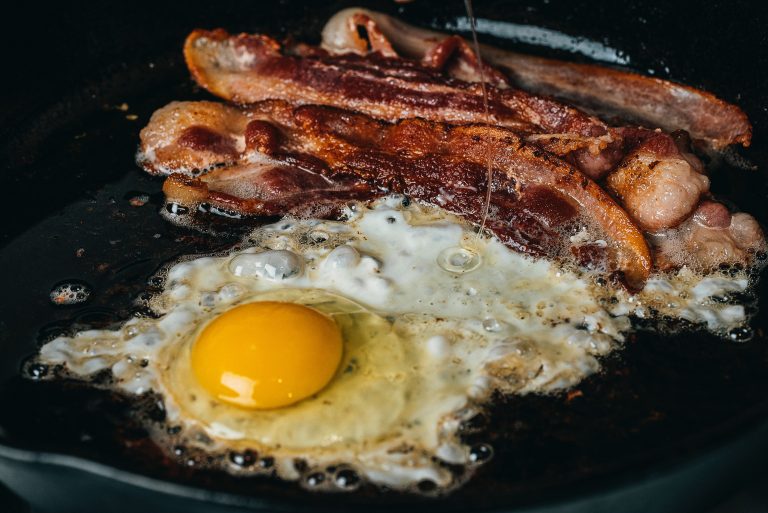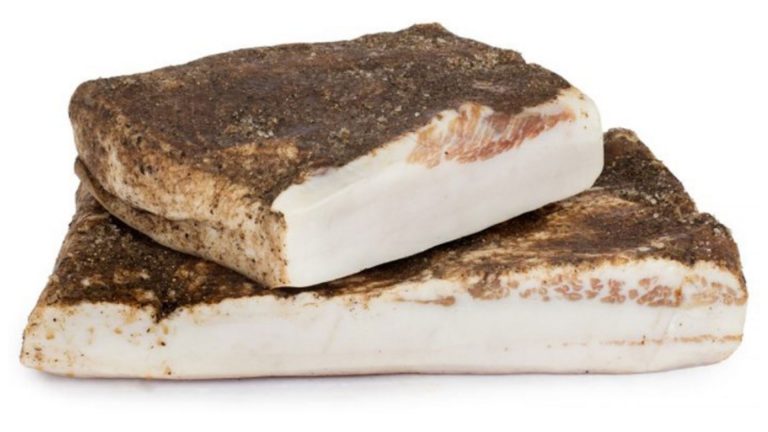Why is My Prosciutto Green?
Prosciutto is cured ham made from Parma, Piemonte, and Latium pigs and is often described as the most expensive ham in the world.
If the prosciutto is pale and green, it is probably just not well cured. If it is dark green, then the prosciutto has gone bad and should be discarded.
Luckily it is very easy to tell if your prosciutto has gone bad.
Follow the tips mentioned in this article to check if your prosciutto has gone bad or not.
Table of Contents
What is the Shelf Life of Prosciutto?
Pork legs covered in salt are dried to create prosciutto. Prosciutto is safe to eat “raw” straight from the package because of the salt coating on the meat.
Compared to other pork products, the drying process gives prosciutto a very long shelf life. Prosciutto is typically sold in vacuum-sealed packages.
Prosciutto can last for up to two years in its original sealed package.
Once the package is opened and the prosciutto is exposed to air, it should be fine in the refrigerator for a few weeks.
Prosciutto can last for a month or more in the fridge, but it’s inadvisable to eat it after it’s gone bad.
It is possible to freeze prosciutto, but it won’t prolong its shelf life. prosciutto’s flavor and texture can be diminished by this process, so it’s a good idea to not freeze it.
If you freeze your prosciutto, you should be able to eat it in a few months.
Refer to the expiration date on the package for specific guidance about the shelf life of the pre-sliced prosciutto.
It is not possible to know how long the ham will last without knowing how long ago it was sliced.

Signs Of Prosciutto Has Gone Bad
The best way to detect if a ham has gone bad is to look at it with your eyes and nose.
Prosciutto that’s fresh and safe to eat should be a shade of deep pink, brown or red, with white fat running through it.
A green or gray tint on the meat is a sign that it has gone bad and shouldn’t be eaten.
If there is visible mold on your meat, it should not be eaten.
A key indicator of ham gone bad is the odor. Prosciutto should smell like pork, salty and sweet.
It’s possible to detect subtle seasonings like black pepper or rosemary, depending on the kind of prosciutto you have and how it was prepared.
It’s not a good idea to smell the meat’s sour or bitter notes.
Look for the following signs to identify whether your prosciutto has gone bad or not:

Expiration Date
It is not possible to eat Prosciutto past the date that it expires. If it’s expired, then throw it away.
Discoloration
If you see any changes in the color of the prosciutto, it’s time to throw it away.
The color of good prosciutto meat varies from pale red to pink with the fat lines having an ivory color.
If there are green or blue spots on the meat, it’s time for it to be thrown away. It’s a common occurrence for bad prosciutto to turn gray.
Bad Odor
Don’t even think about tossing your prosciutto if it doesn’t smell right. The smell of prosciutto should be similar to that of bacon. It should smell fresh.
Slimy Texture
The slimy texture is a good indicator that the prosciutto has gone bad. The coating on the meat appears to have been caused by the breakdown of the acid.
When pressed on with a finger, prosciutto that is still good should be dry, and not slimy. Knowing the signs of bad prosciutto is important for people who like eating cured meat.
We don’t have to tell you about the health risks of consuming spoiled prosciutto, but it’s a horrible experience and comes with many health risks.

Storage Tips
Here are the ways to store prosciutto.
Storing Sliced Prosciutto
The most accessible form of meat in the United States, sliced prosciutto, spoils more easily than a full leg.
If your sliced prosciutto is vacuum-sealed, you should keep it in your fridge, away from warm places.
It is not a good idea to touch any other foods that have aromas that could affect the taste or smell of the meat.
If you want to experience the full quality of this Italian ham, you need to eat your prosciutto slices sooner than later.
Storing a Bone-in Prosciutto Leg
Dry-cured meat can be kept in the pantry, cellar, or any other cool room in the house where the temperature is not higher than 65F.
If you live in a warm area or there isn’t a cool room in your house, consider refrigerating the prosciutto instead.
Prosciutto should be kept out of the sun or away from any heat sources.
You can not always control the temperature in your kitchen, so you will be at risk of letting your Italian ham go bad.

Storing a Boneless Prosciutto Leg
When the bone in the prosciutto leg is removed, it is usually sold vacuum-sealed.
The shelf life of the prosciutto can be extended if the air is removed from the packaging. As long as the vacuum packaging on the prosciutto is undamaged, it will keep nice and fresh.
If you accidentally cut into the vacuum pack, you will cause the ham to go bad quicker, so store it in wax paper or cling wrap.
It is possible to put a kitchen towel over the prosciutto leg wrapped in cling wrap as an additional layer of protection.
The fridge is the best place to store it. If you want to finish your prosciutto legs in a week, you should change the wrap on the leg every week or more often.
If you don’t give it enough attention, it will start to taste old and not as tender and delicate.
Storing Prosciutto After Opening
Store prosciutto covered with foil, wax paper, or cling wrap to prevent it from drying out or touching other products in the fridge.
It should be kept away from products like cheese.
When stored touching, the cheese aromas change the flavor profile of prosciutto.
Conclusion
A Prosciutto life depends on several factors, including how well the product was stored before you purchased it, how you stored it, and the type of Prosciutto.
Dry-cured leg prosciutto will last the longest out of all of your options, and thinly sliced leg prosciutto will last the least.
It is important to remember that opening or slicing your Prosciutto will greatly reduce its storage life.
The surface of the meat is being allowed to be reached by more air and bacteria.

Foodie and a passionate cook, I am here to share all of what I know about cooking, kitchen, and food prepping.
Follow me for delicious and healthy recipes.





